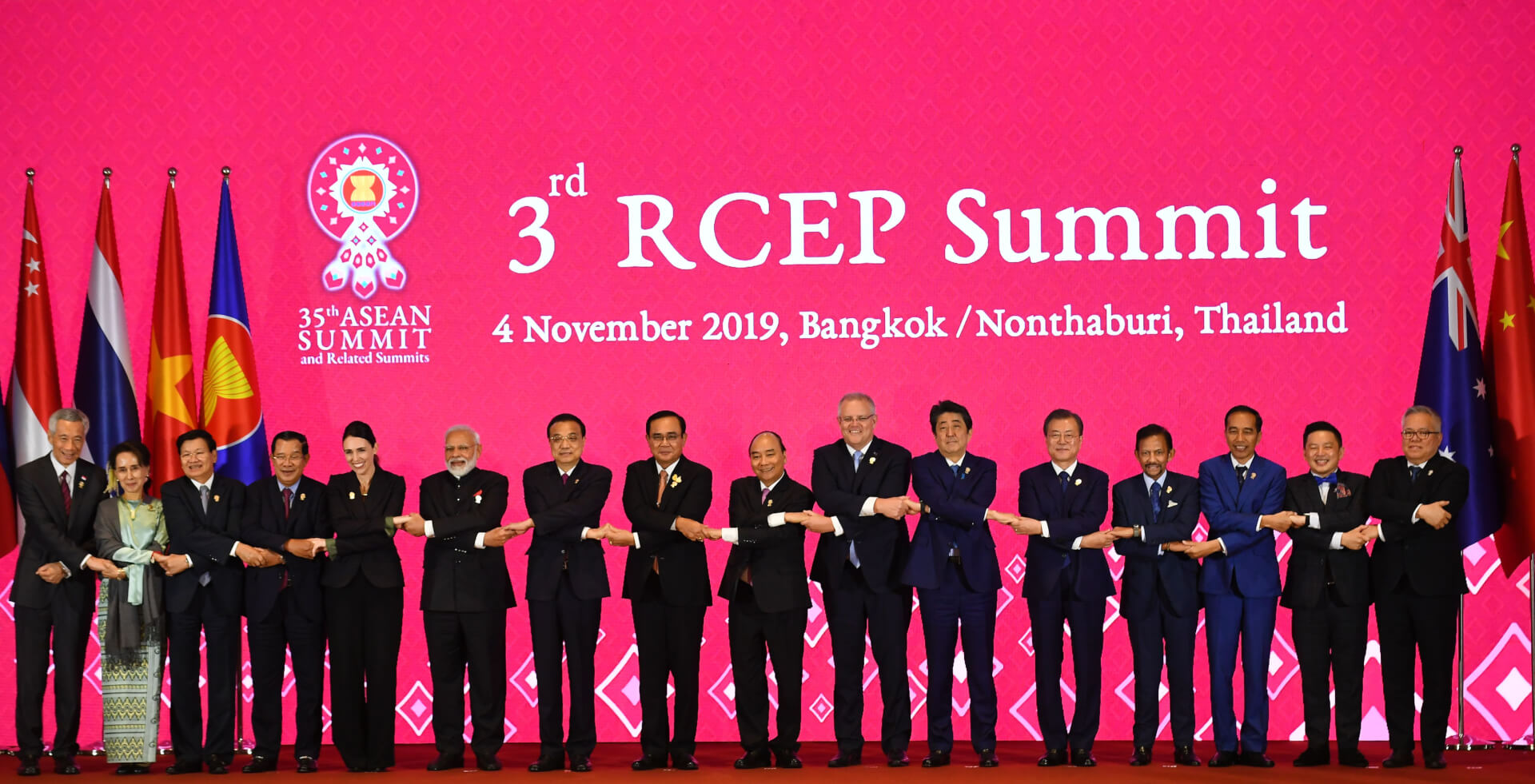In what is being viewed as a major victory for China’s ambition to extend its economic influence across the globe, fifteen countries from the Asia-Pacific region signed the Regional Comprehensive Economic Partnership (RCEP) trade deal. Apart from the 10 members of the Association of South-East Asian Nations (ASEAN), the deal was signed by China, South Korea, and New Zealand. Japan and Australia, who are members of the Quad and have been working with India and the United States to counter Chinese aggression in the Indo-Pacific, also agreed to participate in the RCEP. The signatories of the deal are home to over 2.2 billion people and account for 30% of the world’s gross domestic product.
The deal, which was first introduced at the 19th ASEAN summit, has been under the works for around eight years now. During the 2012 meet, a document titled “Guiding Principles and Objectives for Negotiating the Regional Comprehensive Economic Partnership” was presented before the members. According to this, the key objective of the RCEPT was “to achieve a modern, comprehensive, high quality and mutually beneficial economic partnership agreement among the ASEAN member states and ASEAN’s FTA [free trade agreement] partners.”
It was finally signed during the last week’s ASEAN summit, which was organised by the leaders to revive their economies that have been severely impacted by the pandemic. As a result of the negotiations, the RCEP will lead to lower tariffs and a boost in investment in the region. Moreover, it also includes rules on other crucial issues such as e-commerce and intellectual property.
After the virtual meeting, Chinese Premier Li Keqiang said, “Under the current global circumstances, the fact the RCEP has been signed after eight years of negotiations brings a ray of light and hope amid the clouds.” He added, “It clearly shows that multilateralism is the right way, and represents the right direction of the global economy and humanity’s progress.”
The agreement is particularly concerning for countries across the world that have been expressing concern about China’s predatory behaviour, specifically through its Belt and Road Initiative. Experts worry that while the richer and bigger economies like China and Singapore have a lot to gain from the agreement, they may “eat into” the other countries’ “industrial products.”
For the US, this deal acts as a cause of major concern, especially since President Donald Trump has withdrawn from the Comprehensive and Progressive Agreement for Trans-Pacific Partnership (CPTPP), which was considered as America’s “pivot” to Asia. This deal was signed by ex-President Barack Obama to counter China’s economic ambitions in the region. However, unlike the RCEP, the CPTPP included extensive clauses on labour rights and environmental protection. Hence, in the absence of the CPTPP, China will gain a significant lead over the US in its economic influence in the Asia-Pacific. Moreover, with a significant number of American allies participating in the RCEP, this is also being viewed as a major setback for the US’s attempt to garner support against Chinese economic ambitions in the region.
Meanwhile, India decided to opt-out of the deal citing the poor quality of Chinese imports as a reason for its decision. According to the Times of India, the agreement had also failed to address other concerns of India such as the threat posed by “circumvention of rules of origin due to tariff differential, the inclusion of fair agreement to address the issues of trade deficits and opening of services.” Moreover, India also expressed its concern over the reduction in customs duty leading to a massive influx of trade, which will, in turn, increase the country’s trade deficit and harm its aim to achieve “self-reliance.” Last year, Indian Prime Minister Narendra Modi said that the country’s decision to opt-out of the deal was guided by the detrimental impact it will have on the “lives and livelihood of all Indians, especially vulnerable sections of the society.” However, India still has the option to join the RCEP as an original negotiating partner even after the deal comes into effect.
15 Asia-Pacific Countries Sign RCEP Deal to Form World's Largest Trading Bloc
Apart from the 10 members of the Association of South-East Asian Nations (ASEAN), the deal was signed by Australia, Japan, China, South Korea, and New Zealand.
November 18, 2020

Premiers of leaders of the ASEAN's members and its observer states during the 35th ASEAN Summit held in 2019. SOURCE: AFP
